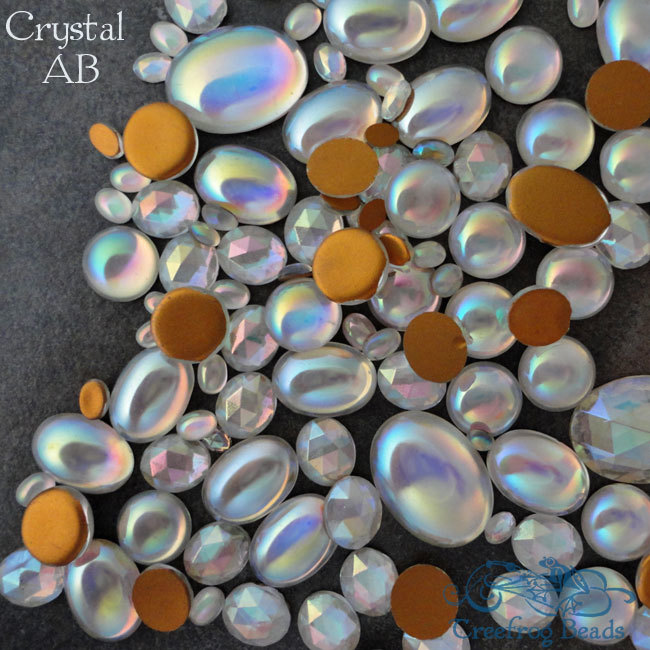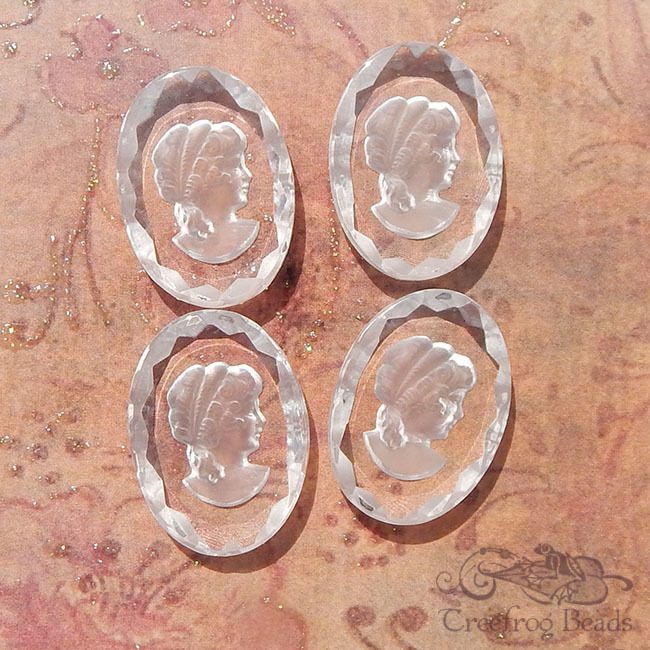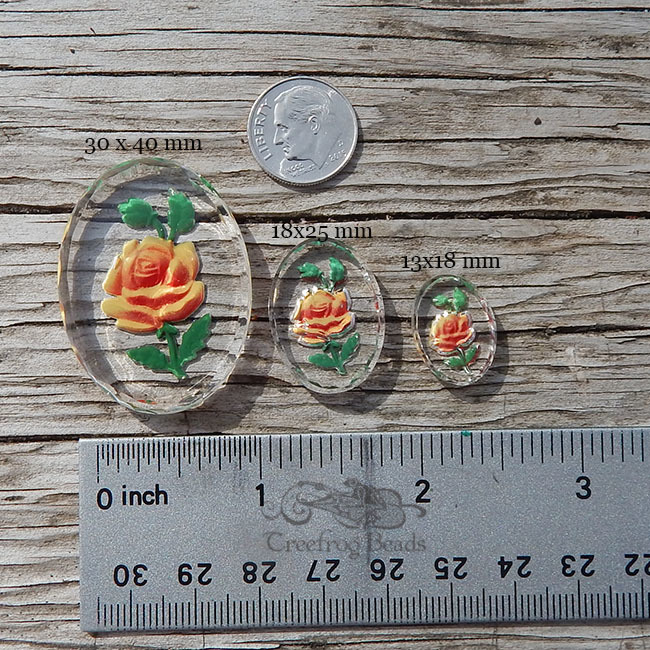I have an abundance of these 1960’s - 70’s vintage glass cabochons, in a good range of sizes, colors and finishes:

I’d like to experiment with some surface etching as well as engraving from the back, but in both cases there are some challenges that I’m not sure how to approach.
As far as surface etching, I’m just not sure what to use for masking? For the regular transparent colors, I can probably just use the same masking paper/tape that I’ve been using… though I do worry that it won’t conform nicely to the convex shape. My bigger concern is with the colors that have aurora borealis or “AB” coatings, like so:

This finish can be somewhat fragile, so I don’t think that tape is a good idea. I read somewhere that a damp paper towel can be a good option for glass, but just wanted to double check that here before trying anything too stupid.
FWIW, here’s an example of some laser etched AB beads that recently hit the market, just to give an idea of the general effect that I’m envisioning:

Engraving the back side poses some different challenges. For one thing, I suspect I’ll need to create a jig to hold them steady - and I have no idea how to go about that. My other concern is that the back sides are all coated with a gold foil, which may be somewhat reflective. This finish can be somewhat fragile too (scrapes or scratches to the foil can be seen from the front) so tape might not work so well here either. You can see what I mean about the foil in this image, which has a few flipped over.
The effect that I’m hoping to achieve with engraving from the back is something like these old intaglio stones:
Sometimes you see “reverse painted” intaglios, which is another effect that I hope to play with:
*Edited twice - #1 because I fat fingered, and hit send before finishing my questions, #2 to add the photo that shows the foil backs 




 I tried one last week and crumbled it to bits.
I tried one last week and crumbled it to bits.
